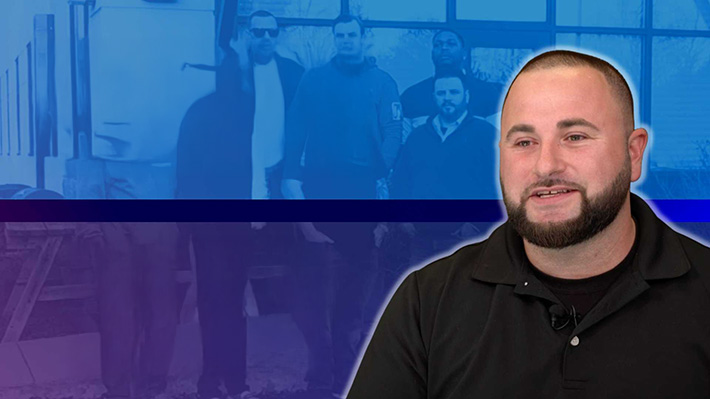sales
Texas Commercial Sales-Based Financing Bill Gets Last Minute ACH Ban Amendment
May 27, 2025The Commercial Sales-Based Financing bill that passed through the Texas House of Representatives two weeks ago has now also passed through the Senate, but with a rather controversial amendment. In the Senate version, passed yesterday, and viewable on the right hand side of this document, sales-based financing providers would not be allowed to automatically debit a merchant’s account unless they have a “validly perfected security interest in the recipient’s account under Chapter 9, Business & Commerce Code, with a first priority against the claims of all other persons.” That means any sales-based funding (like an MCA or revenue-based financing loan) would be prohibited from debiting merchants automatically unless they were in true first position. And not just a first position MCA, but first position on all arrangements the merchant has altogether. AND it would have to be perfected in accordance with this statute.
The Senate Amendment:
CERTAIN AUTOMATIC DEBITS PROHIBITED.
A provider or commercial sales-based financing broker may not establish a mechanism for automatically debiting a recipient’s deposit account unless the provider or broker holds a validly perfected security interest in the recipient’s account under Chapter 9, Business & Commerce Code, with a first priority against the claims of all other persons.
Since the main difference between what the Senate and House passed is that one sentence prohibiting automatic debits, they have until June 2nd to decide which version of the passed bill is final.
Sales-based financing is broad. While the term encompasses sales-based purchase transactions (MCAs), firms like Walmart and PayPal engage in loan-based sales-based financing. Both firms, for example, are registered sales-based financing providers in the state of Virginia.
The Texas Senate amendment language is new. It does not resemble anything passed in a state commercial financing disclosure law to date.
An estimated 10% of all sales-based financing in the US takes place with Texas-based businesses.
The Largest Sales-Based Financing Providers
May 27, 2025Who are some of the largest sales-based financing providers in the US? The following companies are repaid as a percentage of sales or revenue, in which the payment amount may increase or decrease according to the volume of sales made or revenue received by the recipient:
| Sales-Based Financing Providers |
| Square |
| PayPal |
| Amazon (via Parafin) |
| Walmart (via Parafin) |
| Shopify |
| Intuit |
| Stripe |
| DoorDash (via Parafin) |
The State of Washington has also recently announced it will be offering sales-based financing through a Department of Commerce initiative.
Among those listed above, Square recently published a White Paper on the impact of its sales-based financing.
“Square Loans has opened credit to populations who traditionally have had less access to business loans. As of the third quarter of 2024, approximately 58% of Square Loan customers are women-owned businesses, compared to the industry average of 19%.38 And 15% of Square Loans go to Black/African-owned businesses compared to an industry average of 6.6%, while 14% of loans go to Hispanic/Latinx-owned businesses compared to the industry average of 11.3%.”
Merchant Confidential
May 2, 2025Carl Brabander, EVP of Strategy for IOU Financial, will be speaking at Broker Fair on May 19 in New York City. Brabander will be sharing data and tips on how to build trust and win deals in the small business finance industry.
This is a can’t-miss session for brokers. Registration for the full-day conference ends soon. You can sign up here.

Role-playing and The Value of Practicing Sales Calls
March 31, 2025deBanked asked several brokers over the past month about the value of role-playing with colleagues to prepare for real life sales engagements. Below are some excerpts of what they said.
 Cheryl Tibbs, Commercial Capital Connect: “Before my broker life, I was a call center supervisor, so just really familiar with call centers making cold calls and that type of thing. So it’s very important [to role play], I think you have to practice. You don’t want to read a script, you don’t want to sound robotic, but you want to be engaged enough where you can have a good conversation with people without having to really think about it.”
Cheryl Tibbs, Commercial Capital Connect: “Before my broker life, I was a call center supervisor, so just really familiar with call centers making cold calls and that type of thing. So it’s very important [to role play], I think you have to practice. You don’t want to read a script, you don’t want to sound robotic, but you want to be engaged enough where you can have a good conversation with people without having to really think about it.”
Is there a point where practice is no longer necessary?
“Our industry changes day-to-day, little by little, things are changing. So I think it’s just always incumbent upon us to sharpen our skills. That means practicing at least once a week.”
 Josh Feinberg, Everlasting Capital: “Role-playing is like stretching before going for a run. It makes it possible for you to be fast on your feet and really be able to have the answers when you’re talking to a, let’s just say, a construction company that does equipment financing, and they’ve financed all of their equipment. A lot of times they’re going to be more knowledgeable about the equipment financing and leasing product than a lot of the brokers that are going to be talking to them in regards to it.”
Josh Feinberg, Everlasting Capital: “Role-playing is like stretching before going for a run. It makes it possible for you to be fast on your feet and really be able to have the answers when you’re talking to a, let’s just say, a construction company that does equipment financing, and they’ve financed all of their equipment. A lot of times they’re going to be more knowledgeable about the equipment financing and leasing product than a lot of the brokers that are going to be talking to them in regards to it.”
Is this something you do with your own reps?
“Yes, especially when someone is newer or starting out, role playing is essential to even a point just like on Equipping The Dream, we need to make sure that we’re call-coaching too. While we’re listening to them on the phone we’re in their ear telling them what to say, just to have them get used to it. And then we do a bunch of different role playing…we’ve done it hundreds and thousands of times over the years”
 Adam Oster, Canyongate Financial: “We have a set list of questions: understanding the merchants needs and building that relationship. And if I know somebody’s really good but they’re not doing well, then we’ll go back and say, ‘Hey, let’s role play. Because there’s something—you’re too complacent, you’re missing something, or you’re not listening to the customer.’ So role play is very important.”
Adam Oster, Canyongate Financial: “We have a set list of questions: understanding the merchants needs and building that relationship. And if I know somebody’s really good but they’re not doing well, then we’ll go back and say, ‘Hey, let’s role play. Because there’s something—you’re too complacent, you’re missing something, or you’re not listening to the customer.’ So role play is very important.”
How does this take place?
“If they’re here locally, we’ll do it in-house a lot of times. I’ve got a couple people—one in California, one in Austin, Texas, so we have to do it over the phone. And if somebody’s thriving, I’ll ask them, ‘What are you doing? What are you saying to your dealerships or your customers that are helping you get deals?'”
Talk to People, Ask Questions, and Deals Are Everywhere
March 17, 2025 “Well, when everybody says it’s tough, that’s when I start smiling, because I’m going to sit there and collect them all,” said Adam Oster, Director of Canyongate Financial. Oster was talking about financing deals for trucks in a tough market, though he’s known to be able to handle any kind of equipment in any kind of market. Part of the joy he gets from the challenge of the job is rooted in just how many great people he gets to speak with. Connecting, helping, and building relationships are his passions. And it never stops for him.
“Well, when everybody says it’s tough, that’s when I start smiling, because I’m going to sit there and collect them all,” said Adam Oster, Director of Canyongate Financial. Oster was talking about financing deals for trucks in a tough market, though he’s known to be able to handle any kind of equipment in any kind of market. Part of the joy he gets from the challenge of the job is rooted in just how many great people he gets to speak with. Connecting, helping, and building relationships are his passions. And it never stops for him.
“I like to jump in and do everything. I have to have direction so I got to be talking to somebody,” Oster said.
True to form, when he’s taking a break from talking about semis, box trucks, and medical equipment, he’s marketing 3″ filled bones, beef cheek rolls, and gourmet treats for dogs.
“My fiancée has a dog food company, so Thursday, Friday, Saturday, Sunday, we’re out slinging dog food, we’re promoting her business,” said Oster. That business is called Abby’s Barkery, and he’s proudly featured on the company’s main Shopify page. Sometimes the two worlds overlap—in that he could be processing payments for treats while placing an equipment deal at the same time.
“…by 7:30 you get home and you’re like, ‘I think just every day is Monday.’ That’s how I’m going to look at it. Every day is just Monday in my life,” he said jokingly.
Oster began his career in mortgages, followed by a stint as the owner of a supplements store. He launched Canyongate right in the early days of the COVID pandemic after a colleague said he’d be really good in the field.
“When we came on we were strictly working capital, and working capital has its peaks and valleys, so I needed to fill the gap when working capital was down,” Oster said. “I’m like, ‘Hey, let’s transition here.’ So we started onboarding.”
 Onboarding with equipment financing providers is precisely what he did. It helped that some of those providers were located right in his own neighborhood, which shortened the learning curve and helped lead to some great relationships. These days, Canyongate’s business is now 70% equipment financing and 30% working capital. Like others deBanked has spoken to, not everyone who makes deals in equipment financing starts off by knowing everything about equipment.
Onboarding with equipment financing providers is precisely what he did. It helped that some of those providers were located right in his own neighborhood, which shortened the learning curve and helped lead to some great relationships. These days, Canyongate’s business is now 70% equipment financing and 30% working capital. Like others deBanked has spoken to, not everyone who makes deals in equipment financing starts off by knowing everything about equipment.
“I knew enough in transportation, semis, trailers, that we lean there. But then I found very quickly that you got medical equipment—everything is a piece of equipment, essentially. So if I get a lot of invoices and I don’t know what they are, I have to Google it. I’ve got to look because the broker doesn’t tell you what it is. So I’m looking it up. I’m like, ‘Okay, this is a CNC machine… or this is a piece of yellow iron.'”
By now he knows so many things so well that he helps other brokers learn the ropes. As part of that he does coaching and training for large groups of people looking to break in. For example, they recently conducted an orientation for 500 people, where they started off by teaching them to focus on a niche. That could be semis or trailers or something else to get in the game. The deals themselves can come from anywhere, including simply knowing someone at the local gas station who might know someone who, in turn, knows another person—turning into a referral. It’s all about building relationships and asking the right questions.
“At the end of the day, it’s just conversation, ‘what are you trying to buy?’ And they’ll tell you. If I don’t know what that equipment is, I’ll say ‘what do you use that equipment for?’ They’ll tell you.”
For brokers already offering products like MCAs, they’re already on the call to steer the conversation in that direction if they so choose, but it’s important to do it thoroughly since the process to get a deal done is a bit more stringent.

“Ask if they need a truck, ask them what they need to finance,” Oster said. “When you’re submitting an equipment finance deal, it’s not an app and banks with no write up. You’ve got to tell me about the customer. Tell me about their experience. How are they going to use this equipment? There’s a lot of detail that goes into the deal before you even submit for underwriting.”
To that end, he said it’s important to set expectations for brokers looking to do equipment finance deals because it isn’t exactly the same even though it’s similar. On one hand if a broker can already sell a daily or weekly payment working capital deal then surely they’d be able to sell a monthly payment equipment financing deal. It’s a no-brainer when it comes to being able to offer the terms.
“Don’t fear it, ask the right questions,” he insists about taking the leap. And be prepared to ask them anytime anywhere. For example, he’s funded five MCA deals just through relationships he’s made through the Barkery.
“That’s a true story,” he said. “And I have pulled probably six or seven equipment deals out of the last year and a half from working at [my fiancée’s] business. So again, it goes back to it’s just conversation. Look at people’s needs. People tell me, ‘Well, I want to update my little shop and do all these things, I just don’t have the money.’ Well, what do you need? ‘Well, I need shelving, I need this…’ ”
Then he offers to help. Suddenly it’s the perpetual Monday all over again where he’s placing the customer while simultaneously processing payment for a good pup to chew on a lamb foot or a mammoth bone.
“And that’s how deals come about. Opportunity is everywhere. I love it. I get excited, man. I get all hyped up about this.”
Let’s Get Personal! (In Sales)
September 16, 2022 “Personalization is adding that human element to a buying process that can traditionally feel either very stressful or cold and clinical,” said Taylor Hicks, Creative Strategist at Elevate Funding. “It’s about recognizing that clients (and prospects) are humans with their own unique set of needs and goals.”
“Personalization is adding that human element to a buying process that can traditionally feel either very stressful or cold and clinical,” said Taylor Hicks, Creative Strategist at Elevate Funding. “It’s about recognizing that clients (and prospects) are humans with their own unique set of needs and goals.”
Working in this industry and communicating with clients is a given but being personable with each one encountered is a task within itself. No client wants to be victim to a boring sales call where the one pitching lacks a persuasive personality. And nobody wants to be on the other end of the call feeling like they are wasting their clients’ time with a dull sales pitch. Making the client-to-business communication an eventful experience for both parties comes with a great amount of pressure, and it also can make or break a deal.
“Be a human being. Don’t do the high-pressure sales things like some of these guys are doing,” said Alexander Gold, CFO at Future Funding. “I get compliments that my guys are not doing that, and I feel like it’s just timing. So, if your timing is good, people will give you the shot. If your timing is bad, you won’t get the shot…”
The client needs to know that they can fully put their trust into a company or product, and it will be worthwhile. Creating a mutual trust, especially when dealing with a person’s finances can be a very personal experience. The key to that can be very simple, as Gold says, to tell them who you are and how you can help with just a moment of their time.
 “So first, you have to build credibility, I would say that’s the most important thing is building credibility,” said Gold. “That could be knowing something they don’t, showing them something or teaching them something that you can prove and then possibly show them as well. I would say products, being very knowledgeable in your products and your product base.”
“So first, you have to build credibility, I would say that’s the most important thing is building credibility,” said Gold. “That could be knowing something they don’t, showing them something or teaching them something that you can prove and then possibly show them as well. I would say products, being very knowledgeable in your products and your product base.”
“…[It’s] how do you provide them interesting insights into their finances or into their needs without coming across overbearing or selling them something that they don’t need?” said Greg Varnell, VP of Product and Development at Q2. “And that’s a real balance. And so, I think, for us, personalization isn’t just trying to sell somebody something, but it’s trying to tell them the information that they need when they need that information.”
“I think trust has to be earned,” said David Roitblat, Founder and CEO at Better Accounting Solutions. “Most of our clients are referral based from other clients. So I guess that speaks for itself. […] So that does give us a head start on that, but ultimately, people judge you based on your work.
“At Elevate, we take a custom-tailored approach for each client,” said Hicks of Elevate. “We send out newsletters to our clients biweekly to remind them of our various programs, like add-ons and renewals. We are proactive in reminding them of their Future Receivables Sales Agreement, and we’ll always work with them on reducing their payment amount if their revenue drops. We provide our clients a variety of ways to get ahold of us – whether that’s email, call, text.”
Regardless of your role in the finance industry, interactions can have long lasting impacts. From the initial meeting to developing trust, and eventually turning that journey into a meaningful working relationship. And who knows, that one great client interaction could lead to many referrals and recommendations in the future.
Monday through Fund-day
September 8, 2022 Nothing screams excitement like a brand-new week filled with endless funding opportunities. Regardless of the type of funding, the ultimate goal is to find clients in need of capital and spring to action quickly.
Nothing screams excitement like a brand-new week filled with endless funding opportunities. Regardless of the type of funding, the ultimate goal is to find clients in need of capital and spring to action quickly.
“I would say Tuesday is like, a day that things get done,” said Michael Krepak, CEO of FlexCap Solutions. “People always talk about Friday’s a closing day. I’ve had a lot of success on Fridays as just like a funding day, like when the deals actually get done afterwards in all the underwriting and the back and forth and stipulations. So, Tuesdays and Fridays…”
Fridays may be hectic for some professionals in the business who are trying to close out a deal before the weekend is over. The pressure to close a deal can create competition within oneself to finish the week off strong or to make sure that nothing ruins it over the weekend.
“There’s always a push to get everyone funded right before the weekend, you don’t want deals rolling over,” said Brendan P. Lynch, CEO at Sharpe Capital. “Too many things can happen: negative days, they can go negative, and then the login, they have to redo it. And you know, the deal can die on Monday. So, you always want to get everything done before the weekend. That’s for sure.”
For equipment finance consultant Cheryl Tibbs, if she is able to finish funding by Thursday, she uses Fridays to either spend quality time with loved ones or to promote her business.
“I’m a bit different than most. I start off strong on Mondays and relax on Friday,” said Tibbs. “When I’m done Thursday, late Thursday evening, Friday is reserved for deals that will fund that day. If I don’t have anything booked for a Friday funding, I usually chill on Fridays and use that for marketing or family time.”
Sonia Alvelo of Latin Financial was non-committal to a day. “What gets us excited is the satisfaction of a job well done…” Alvelo said.
Krepak meanwhile, explained that if you’re working on commission, then there is an incentive to keep going strong every day. “Like every day, you want to do something every day,” he said. “It’s just a competitive face to begin with.”
The Power of the Suit
August 15, 2022 Getting out of bed in the morning can be rough after a long night’s rest but jumping into your work outfit is like putting on a superhero cape to go out and save small businesses that need capital. Working in the finance industry, wardrobe is the last thing mentioned in regards to the job itself, but it is what allows many to put their best foot forward.
Getting out of bed in the morning can be rough after a long night’s rest but jumping into your work outfit is like putting on a superhero cape to go out and save small businesses that need capital. Working in the finance industry, wardrobe is the last thing mentioned in regards to the job itself, but it is what allows many to put their best foot forward.
“I come from a suit and tie background, it’s like a uniform,” said Mike Brooks, owner of Best Connect Capital. “So, when you’re a broker and you’re dealing with business owners, you’re holding a lot of weight, a lot of power in your hands, especially when you get a good client on the hook. So, I just feel that dressing appropriately whether it’s a suit and tie or work casual is absolutely essential.”
There’s a saying, Brooks continued, “When you look good you feel good.”
“I’m a woman, I like to dress up, it’s fun but most importantly we’re working in a male dominated industry,” said Angelina Fletcher, Director of Business Development at Wing Lake Capital. “A lot of the brokers and lenders that I work with have been in the industry for 20 plus years, they’ve already built their brand, I’m still building my brand. Walking into these events looking fresh and professional makes me feel good and confident so I can focus on networking.”
And when striving to close those business deals, having a special piece of clothing that gives one an extra push can dictate the confidence he/she possess throughout the day. Whether it’s a favorite tie or a favorite pair of shoes, there can be an item that sets the tone.
“My biggest thing is my Rolex watch, when you’re in situations it definitely gives you a sense of confidence,” said Brooks. “It’s a life milestone to be able to purchase a Rolex even if people are way past that point in their mind.”
It’s not so much about accessories, however, to Dr. Rev. R.J. Rochelle, Business Financial Planner & Exit Strategist. Rochelle starts his day off by being active.
“I’ll take a pre-workout,” Rochelle said. “Now that pre-workout gets me pumped, it’s better than coffee. And then I’ll go work out.”
On wardrobe, Rochelle said he finds it important to put his best foot forward when he’s out meeting potential clients in person and that the mindset comes more from starting off the day with music or a sales podcast.
“When I commute or when I’m about to go out to the field in particular to get pumped up, I may play like Commas by Future because we’re talking about making money,” Rochelle said.
Fletcher of Wing Lake also has a routine that gets her started.
“I meditate, I drink my coffee and I have liquid IV,” she said.
Whatever the routine or the gear, there’s a little magic to it all.
“if you’re like a medic or a police officer or you’re in the army and you’re wearing like clothes that don’t match up with what you’re doing… I’m sure [they’d] feel different,” said Brooks of Best Connect Capital.





























